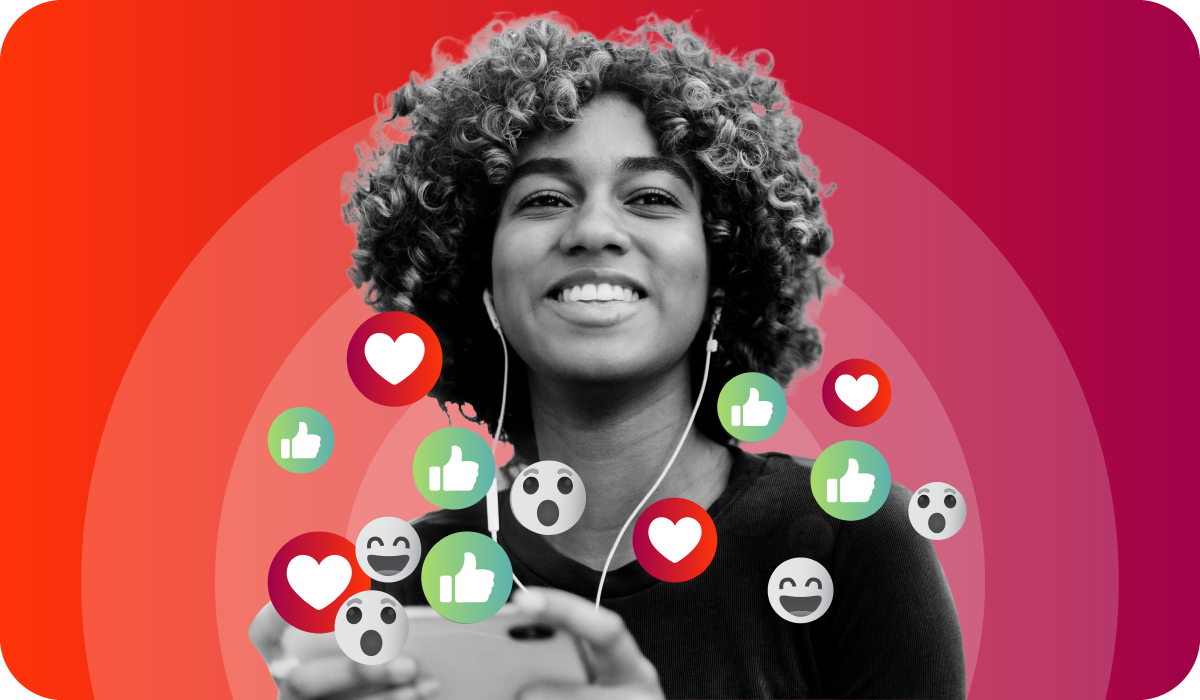Authenticity can’t be bought—but it can be tested
Market Research • Oct 16, 2025 1:00:00 PM • Written by: Gracey Mussina

We’re living in an era where the most influential content rejects influence. So-called “de-influencers” are seeing a surge in popularity. It’s a paradox that’s left brands scrambling. If traditional influence is dead, what replaces it? And more importantly, how do you market to consumers who have are increasingly tuning out everything that feels like marketing?
The answer isn’t just about finding the right influencer or crafting the perfect advertising hook. It’s about authentic connections between the brand and the consumer. It’s understanding that authenticity can’t be manufactured or bought.
From influence to de-influence: The commercialization of connection
Influencer marketing started as genuine product discovery with real people sharing recommendations that felt like advice from a friend.
Early influencers built communities around genuine expertise, whether that was fashion, beauty, gaming, or fitness. Their followers trusted them because the relationship and content felt authentic and unfiltered.
Then brands caught onto the trend. As billions poured into influencer partnerships, feeds transformed. What was once a space to connect became a place to sell. Every post became potentially sponsored. Every product placement became a little too perfectly positioned. The line between genuine recommendation and paid promotion blurred until it disappeared entirely.
The numbers tell the freefall:
A 2020 study by the Influencer Marketing Association found that 70% of Gen Z trusted influencers more than traditional celebrities, proof that the model initially worked. But just three years later, nearly 90% of consumers reported they no longer trust influencers.
Even more telling: 81% said a brand’s use of influencers has either no impact or a negative impact on their perception of that brand, with 51% admitting they actively scroll past influencer posts.
The final nail in the coffin? 86% of consumers now say they’re more likely to trust a brand that publishes user-generated content while only 12% are inclined to purchase based on influencer promotion.
What happened?
Gen Z, Zillenials, and Millenials grew up alongside social media and watched their feeds transform from social spaces to selling spaces.
They witnessed every platform become an ad network. They’ve seen their favorite creators become walking billboards. And in the process, they learned how to spot inauthencity in the time it takes to scroll past a post.
These generations can sense when someone's reading from a script, when excitement is performed rather than felt, when a recommendation comes from a contract rather than conviction. They know the difference between "I love this product" and "I was paid to say I love this product"—even if it isn’t properly disclosed.
This isn't a rejection of recommendations. These generations still want to discover products. They're still influenced by what they see in their feeds. They just want it to feel real.
The rise of mini but mighty influencing
As trust in mega-influencers eroded, brands and consumers migrated towards smaller voices—micro and nano influencers with thousands of followers rather than millions.
These smaller influencers still feel like regular people, because they are. They have day jobs, smaller communities, and genuine expertise and passion rather than professional influence. Their content lives alongside your friend’s vacation photos, and it feels natural, not paid for.
Most importantly: these small influencers are cherry-picking their recommendations. Unlike mega-influencers promoting everything from meal kits to VPN services in a single week (or day even), micro-influencers are selective. They promote products they genuinely want to endorse because their smaller audience knows them well enough to call out inconsistency. Their reputation depends on authenticity. They don’t try and slip covert advertising into their content to surreptitiously make more money because they’re actually concerned about credibility and trust.
This selectivity makes their recommendations powerful. When a micro-influencer says they love a product, their audience believes they actually use it.
But here’s the trap:
Brands see these numbers and think the solution is simple: make content look more authentic. Add shaky camera work. Use casual language. Mimic UGC aesthetic.
But trying to manufacture authenticity is just another form of inauthenticity. The moment consumers sense you’re curating an unfiltered look, you’ve lost them. A brand pretending to be casual feels even more disingenuous than a brand being openly polished.
So, if authenticity can’t be faked or bought, how do brands find it?
Why you can’t research your way to real
When brands realize authenticity matters, the instinct is to figure out how to create it.
They workshop messaging. They test taglines. They ask if something "feels genuine."
But you can't engineer authenticity.
Think about scrolling past an influencer post that felt off. Maybe the enthusiasm seemed forced, or the product didn't fit their usual content. You couldn't pinpoint exactly why—you just knew something wasn’t clicking, so you kept scrolling.
This is why you can't hire just any influencer to say what you want and expect their audience to find it trustworthy. If that influencer doesn't genuinely resonate with your core audience—if their values, content style, or community don't align with your brand—their endorsement will ring hollow. Their followers will sense the disconnect immediately.
Authenticity requires real alignment that can’t be forced, fabricated, or asked about. It’s something you have to observe in action.
Testing where authenticity lives
So, if you can’t manufacture authenticity and you can’t capture it, what’s left?
Watch what people actually do.
We recently tested what drives people to engage with candy content. We created two unbranded ad styles—one using meme-style visuals, another using simple tweet-style text. Each highlighted different motivators: nostalgia, savings, flavor variety, and others.
Here’s what happened:
When you ask people what matters most when buying candy, 40% say price. But in actual feeds, nostalgia-driven content drove the strongest action. Messages that evoked emotion, like carefree or joyful moments, are ultimately what got people to stop and engage.
When you test in the wild, you learn how and what your audiences clicks with and what really drives their behavior. The only way to know what feels authentic to your audience and truly resonates with them is to discover what (or who) actually stops their scroll and use that to understand how to better connect with them.
Test where your audience really lives
Your audience already knows what feels real to them.
They prove it every time they’re online—pausing on some content, skipping past the rest.
The brands who navigate this shift successfully have stopped trying to create authenticity and started discovering where it already exists. They place creative concepts where their audience naturally consumes content, trying multiple approaches with different messages, styles, and emotional triggers to measure which combinations drive real engagement.
What they learn can’t be captured in traditional research. The only way to know is to test where your specific audience scrolls and see what resonates. Your audience is already showing you what feels real to them. You just need to test in the wild to see it.
Start measuring what matters.
Gracey Mussina
Gracey is a Copywriter at Orchard, where she transforms client ideas into messaging that reveals what truly drives consumer behavior. Her experience spans writing, marketing, content creation and a deep curiosity for cultural anthropology and understanding how behavior shifts over time. That blend is what drew her to Orchard’s in the wild testing, where messaging meets people in their real, everyday contexts. She brings a curiosity for culture and a love for language—helping clients communicate what matters, in the moments it matters most, where it all naturally unfolds.
